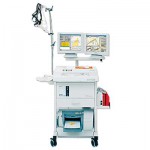When To Use Metabolic Carts In Clinical Practice
Thursday, January 14, 2016 Caloric requirements are generally estimated using formulas that use age, sex, and weight as variables. While these formulas provide a rough estimate, they are notoriously unreliable in a number of clinical situations, especially in critically ill patients, where under or over nutrition can substantially influence outcome.
Caloric requirements are generally estimated using formulas that use age, sex, and weight as variables. While these formulas provide a rough estimate, they are notoriously unreliable in a number of clinical situations, especially in critically ill patients, where under or over nutrition can substantially influence outcome.
A more precise way to measure caloric requirement involves the use of the so-called metabolic cart, where energy requirements are indirectly measured based on CO2 production.
A paper by Pierre and Joelle Singer, published in Nutrition in Clinical Practice now discusses the various situations where measurement of energy requirements using indirect calorimetry may be deemed to be essential for good clinical care.
These situations include patients in ICU, especially patients with sepsis or chronic pulmonary disease, or those that appear malnourished.
In obesity, the authors note that
“Energy requirements are difficult to define in these patients since their lean body mass, which determines the REE, may decrease, increase, or be normal, and fat may also contribute to variability in REE.”
Thus, measuring metabolic rate should be the gold standard as
“…actual body weight is likely to overestimate needs, while ideal body weight will underestimate them.”
The paper also discusses the practical limitations and potential pitfalls of using indirect calorimetry in various practice situations.
Unfortunately, the paper does not discuss the potential utility of measuring REE in obesity management, including the post-bariatric surgery patients, where current equations do not provide accurate estimates.
Nevertheless, the paper is certainly an interesting read for clinicians, who want to better understand when to use indirect calorimetry to monitor and adjust energy requirements in critically ill patients.
@DrSharma
Edmonton, AB


